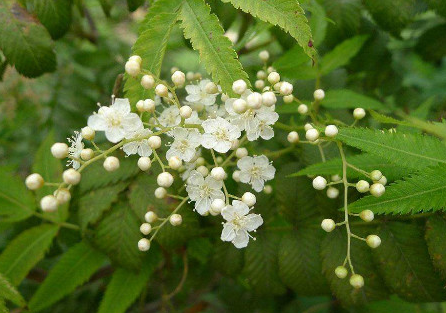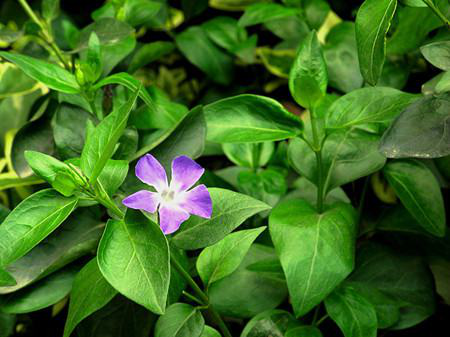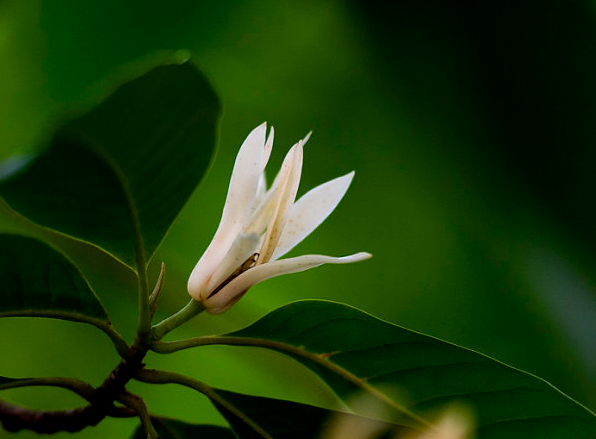The cause of yellowing of Pearl Plum leaves and its solution
1. Pearl plum leaves turn yellow: the humidity is too low.
Pearl plum likes to grow in a moist environment, so if the air is too dry and low humidity, its leaves will turn yellow and dry.
Solution:
Water can be sprayed around the pearl plum plant, or several pots of water can be placed around it, which can improve the air humidity and alleviate the yellowing and drying of leaves due to insufficient humidity.

2. Pearl plum leaves turn yellow: iron deficiency
It should be said that iron deficiency is one of the most easily ignored factors leading to the yellowing of pearl plum leaves, because iron is one of the very important growth elements in the growth process of pearl plum. If iron is deficient, the leaves will change from green to yellow.
Solution:
If it is lack of iron, it is necessary to regularly apply compound fertilizer or minerals in the soil, which can supplement the growth elements needed for its growth and avoid yellowing of leaves and other problems.
3. Pearl plum leaves turn yellow: overwatered or underwatered
Excessive watering should be one of the main reasons for the yellowing of pearl plum leaves. Pearl plum likes the moist growth environment, but excessive watering will lead to stagnant water in the basin soil, and the root system will rot in the stagnant water environment for a long time. Root rot will directly affect the water supply and nutrient supply of the leaves, the leaves will naturally turn yellow, and the serious situation will die. Long-term lack of watering will lead to basin soil hardening, root system can not absorb enough water will also appear the phenomenon of leaf yellowing.
Solution:
Pearl plum likes the humid environment, stagnant water can easily lead to rotten roots, and lack of water affects plant growth, so attention should be paid to timely drainage in the rainy season, sufficient water should be watered in the dry season, soil moisture should be loosened in time after watering, and frozen water should be watered and opened in early winter and early spring. Daily watering should observe the basin soil at any time and keep the basin soil in a relatively moist state, so as to avoid the yellowing of leaves caused by insufficient watering and excessive watering.
In the process of plant culture, there will inevitably be some thorny problems, but it can be dealt with after mastering the causes of its problems. Learn more about plant maintenance, please pay attention to the four Seasons Plant Network!
What if the leaves of Pearl Plum turn yellow?
Pearl plum leaves turn yellow-- too much watering
One of the main reasons for the yellowing of pearl plum leaves when watered too much.
In the daily maintenance of Pearl Plum, too much watering, the soil will be relatively moist, or even in a stagnant state, which directly leads to root decay, which will further cause leaves to turn yellow, new leaves withered and other phenomena, this is the leaves yellowing.
In the daily watering, it should be determined according to the growth of the plant, to see whether the basin soil is dry, wait until the basin soil is dry before watering, if the basin soil is still relatively wet, it can not be watered. Watering the soil after drying will not only reduce the occurrence of rotten roots and yellow leaves, but also promote the good growth of branches and leaves.
Pearl plum leaves turn yellow-the humidity is too low
In the process of cultivating Pearl Plum, if the humidity is relatively low, it will cause the leaves to turn yellow and dry. So at this time, we need to improve the humidity of the air, you can spray a lot of water around the plant, or put a few basins of water, can play the effect of increasing air humidity, so as to alleviate the current situation of pearl plum leaves yellowing and drying.
Pearl plum leaves turn yellow-- iron deficiency
Sometimes, when pearl plum lacks iron or other elements, the leaves will turn yellow. This is due to the lack of growth elements, resulting in the loss of green leaves.
You can put a certain amount of compound fertilizer or minerals in the soil to supplement the loss of various growth elements and prevent the leaves from yellowing.
What if the leaves of Pearl Plum turn yellow and how to deal with them?
Pearl plum, also known as Spiraea, belongs to the genus Spiraea of Rosaceae, deciduous shrubs, luxuriant branches, umbels, dense white flowers, like snow. The flowering period is from April to May, which is suitable for cluster planting, group planting and slice planting, and the beautiful appearance of family potted plants is more relaxing and pleasant. Pearl plum is a common flower, because when it blossoms, the color of the flower is more like a pearl, and gets such a name. Then the leaves turned yellow when raising Pearl Plum.
Analysis on the causes of yellowing of Pearl Plum leaves 1. Pearl plum leaves yellowing: low humidity
In the process of cultivating Pearl Plum, if the humidity is relatively low, it will cause the leaves to turn yellow and dry. So at this time, we need to improve the humidity of the air, you can spray a lot of water around the plant, or put a few basins of water, can play the effect of increasing air humidity, so as to alleviate the current situation of pearl plum leaves yellowing and drying.
2. Pearl plum leaves turn yellow: iron deficiency
Sometimes, when pearl plum lacks iron or other elements, the leaves will turn yellow. This is due to the lack of growth elements, resulting in the loss of green leaves.
You can put a certain amount of compound fertilizer or minerals in the soil to supplement the loss of various growth elements and prevent the leaves from yellowing.
3. Pearl plum leaves turn yellow: too much watering
One of the main reasons for the yellowing of pearl plum leaves when watered too much.
In the daily maintenance of Pearl Plum, too much watering, the soil will be relatively moist, or even in a stagnant state, which directly leads to root decay, which will further cause leaves to turn yellow, new leaves withered and other phenomena, this is the leaves yellowing.
In the daily watering, it should be determined according to the growth of the plant, to see whether the basin soil is dry, wait until the basin soil is dry before watering, if the basin soil is still relatively wet, it can not be watered. Watering the soil after drying will not only reduce the occurrence of rotten roots and yellow leaves, but also promote the good growth of branches and leaves.
- Prev

Maintenance methods of new plants of Catharanthus roseus
1. The new plants of Catharanthus roseus need to be exposed to sufficient astigmatism first to ensure the normal progress of nutrients and photosynthesis. After survival, they need to choose to grow in a semi-shady environment. Usually, the flowerpot should be placed in a semi-shady place. If the scattered light is sufficient, it can grow rapidly and the flowers will be colorful.
- Next

Maintenance of white orchid during flowering period
1. Sufficient light the white orchid likes the growth environment with sufficient light, which should not be less than 6 hours a day. If the white orchid is kept in the shade, it will only grow leaves but not blossom, or blossom very little. But in the hot and hot "dog days" to moderate shade, generally at 12-16:00 every day to avoid the hot sun exposure
Related
- Fuxing push coffee new agricultural production and marketing class: lack of small-scale processing plants
- Jujube rice field leisure farm deep ploughing Yilan for five years to create a space for organic food and play
- Nongyu Farm-A trial of organic papaya for brave women with advanced technology
- Four points for attention in the prevention and control of diseases and insect pests of edible fungi
- How to add nutrient solution to Edible Fungi
- Is there any good way to control edible fungus mites?
- Open Inoculation Technology of Edible Fungi
- Is there any clever way to use fertilizer for edible fungus in winter?
- What agents are used to kill the pathogens of edible fungi in the mushroom shed?
- Rapid drying of Edible Fungi

